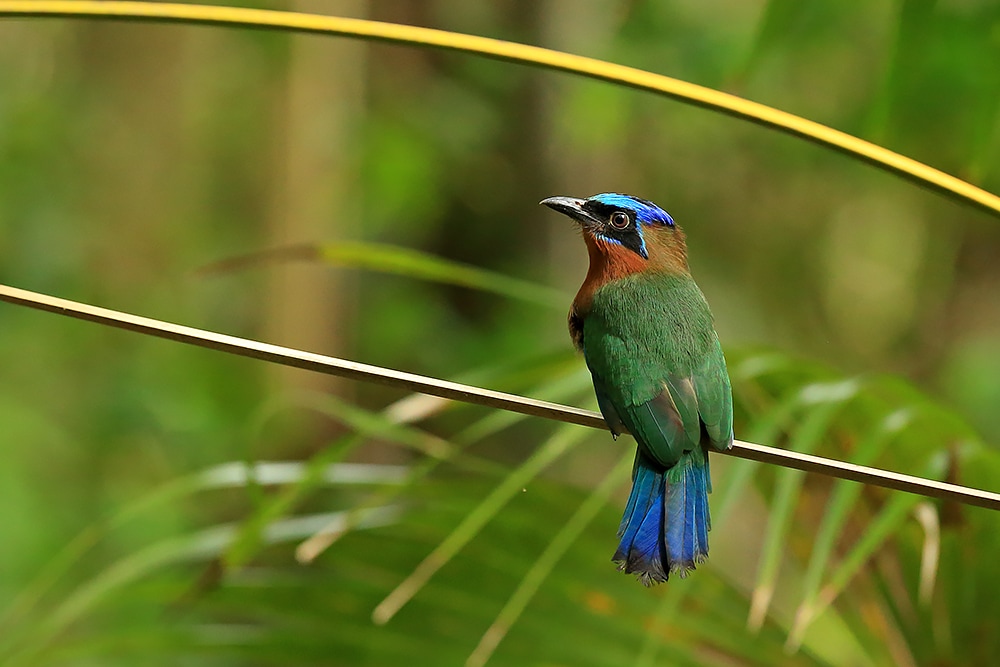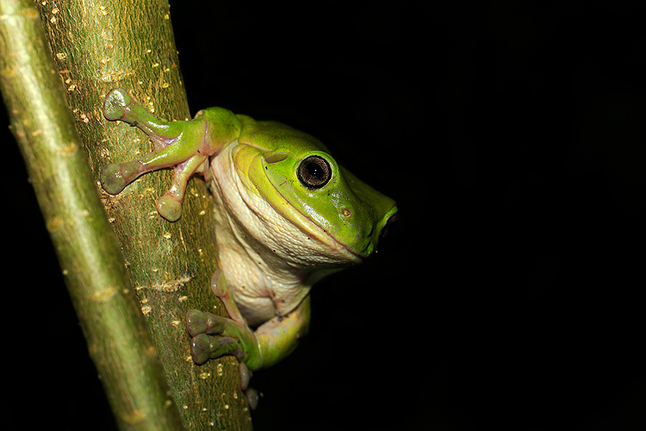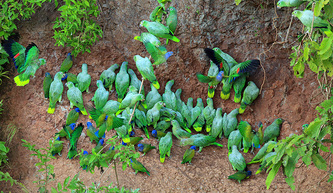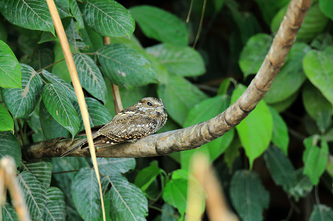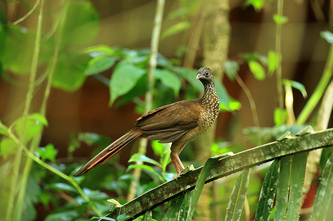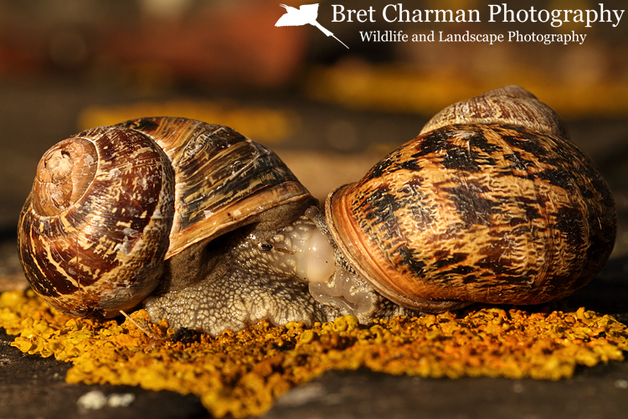|
Last year was one of great change for me … after spending a year photographing in Australia, it was time to get crack on with my career and put photography on the back burner. Don’t worry - the photography will be back in force in 2017! I had built up an incredible portfolio of images in 2015, thanks to my time ‘down under’, and I decided to try my luck in a few competitions. It turns out I had some success – who would have thought that would happen? Well I was delighted to have images shortlisted in Outdoor Photographer of the Year, Bird Photographer of the Year and Australian Nature Photographer of the Year. The two images shortlisted in Bird Photographer of the Year both featured in the accompanying book and my image Murray Magic featured in the Kew Gardens exhibition. When I got the news that three of my images had made it through to the final of Australian Nature Photographer of the Year, I was excited but didn’t really think too much of it. It wasn’t until a friend (the incredibly talented Trevor Scouten) alerted me to the fact that these three images were actually going to feature in the exhibition, and accompanying media, that it really hit home. In June I was contacted again by the competition, informing me I was either a winner or runner up in one of the categories I had entered. I learnt no more until the results were announced in the press – I found out through the Australian news that I was a winner of the ‘Threatened Species’ category with my image titled Palm Grove Dingo. The image has since been used in the accompanying book, wall calendar, desktop calendar and diary. The image was then used at the main entrance of the exhibition – printed in large format … this for me was the greatest honour. It wasn’t all about the competitions though. I had a great year of travel once more with trips to India, Tobago and Colombia. None of which were necessarily exceptional from a photographic point of view but I did strike lucky on a few occasions (you can see a selection of images below). 2017 promises to be another great year for me with trips to Africa and Ecuador planned for my own photography. I will be leading two dedicated photography trips in June, one to Skomer Island in Wales for Puffins and the other to Finland to photograph Bears, Wolverines and Wolves. I will also be running one-to-one workshops a little closer to home focusing on Roe and Fallow Deer. If you have any interest in joining me on these trips I would love to hear from you – feel free to email me at any time.
I wish you all a very happy new year and I hope to see as many of you in 2017 as possible.
3 Comments
So we have spent the last few weeks up in the tropical part of Queensland, hot sun, rain and frogs were the recurring theme. Some people hate frogs and some are even afraid of them but I absolutely love them, especially tree frogs, and went out almost every evening in search of some amphibian friends. To say I got lucky would be an an understatement. It was utterly mind blowing! There was the world's largest species of tree frog, the White-lipped Tree Frog that really would fill your entire hand, as well as the tiny little Red-eyed Tree Frog which are indescribably beautiful and rather petite compared to their larger cousins. Anyway, I had an absolutely amazing time with the frogs and the following images were captured over the space of a few weeks. We have already encountered the Green Tree Frog further south near to Byron Bay but they are still amazing subjects and they always look like they are smiling. In my books, any animal that looks as if it is smiling is instantly a favourite. At first glance the Dainty and the Red-eyed Tree Frogs look very similar but their calls are noticeably different. Once you get close enough with a torch you quickly realise they have quite different features and own distinct habits. They are much more aware of you when photographing them and only relax again once you move further away. The Eastern Dwarf Tree Frog really is utterly tiny, at first you think it must be a new born. To give you an idea of its miniature stature, the tadpoles are actually bigger then some of the adult frogs. The image below gives you an idea of just how tiny they are, resting on my girlfriend's finger tip (this individual was being rescued from the swimming pool). I will update you all with some amazing mammal pictures soon, including one that I have always wanted to see, a really weird and unique species. I would also just like to say a massive thank you to Canon Professional Services, Australia! My Canon 5D mkIII had a complete power unit failure and I was stuck without a camera but CPS came to my rescue and lent me a 1DX for the Christmas period. Without this camera I would not have been able to capture any of the images you see above. This just underlines why I use Canon equipment, the service is out of this world.
So, first off I have to say sorry for being off the radar for the last few months. I have had a completely manic few months but could have a few really exciting things lined up for the future and particularly regarding my photography. Also the weather for 2 months or so was absolutely diabolical with a lot of flooding and real lack of photographic opportunities.
So where do I even begin ... well first off I got an image in to the final round of Wildlife Photographer of the Year! Sounds great, and it was but a complete nightmare followed ... I ended up having a catastrophic hard drive failure and that one image alone was one of about 50 images that were not back up. I know it is completely my fault and it is definitely a lesson learnt. Now I know exactly what I need to do for next year and I can't wait to get cracking on some projects. Anyway here is a random selection of images from the last few months when I have been able to go out with the camera. The third day in the Amazon Basin and another early start, this time I was heading to the famous 'clay licks' on the Napo River. These are muddy cliff faces along the river bank, where large numbers of Parrots come to feed on the soil. First though, we had to head across the black lake and a short walk through the forest to get to the motorised canoes. When we arrived at the river side of the lake, we were greeted by a tell tale crashing sound in the canopy. There, above us, were a huge group of Squirrel Monkeys, undoubtedly the same group as we saw upon our arrival to the forest, and joining them were a group of White-faced Capuchins. They 'monkeyed' around for a while but we couldn't stay long, we were on a mission that had a time limit. After our morning monkey fix we quickly made our way to the motorised canoes on the banks of the Rio Napo. After around a 30-minute ride down the river, we arrived at the large clay cliff where we would not have to wait long for our feathered friends. The noise was what you notice first, a constant noise which can only sound like a group of parrots together. They chatter among themselves, until one builds up the courage to leave the safety of the trees and expose themself on the bare cliff face. The parrots have to come back every few days, a wide variety of species are reliant on these clay licks to ensure that the minerals in the soil counteract the naturally occuring toxins in their diet. If they couldn't get these vital nutrients then they would not survive. Occasionally the odd Boa Constrictor ambushes the birds as they fly to the cliff face and this is why they are particularly nervous and flighty. We we were quickly in luck with a variety of different species feeding on two different parts of the bank. Mealy Amazons making up most of the numbers but Dusky-headed Parakeets providing plenty of vocal support. We next visited the inland 'cave' parrot lick of Napo Wildlife Centre, this was around a half an hour walk into Yasuni National Park and a sit and wait affair. The noise again was staggering, particularly as the birds surround you in the trees above, you know they are there but you just can't see them. Gradually they come lower and lower until one brave individual decides to break cover and starts to carve off small slices of clay which it eats as if it were food. Have a look at the video and you can hear the noise for yourself! After a long day out and about around the forest and spending time around the clay lick on and off up until lunch, it was time to head back to the lodge and try my hand at a bit of afternoon macro photography. However a very unexpected visitor ended up altering my plans somewhat. I practised my macro photography as I was meant to be running a workshop there later on in the evening, and having found some good subjects in the shape of spiders and other creepy crawlies I was happy to get some rest. However, on my way back to my room I saw some movement ... As you can see the surprise animal, and now definitely one of my favourite species worldwide, was the Pygmy Marmoset. This is the world's smallest monkey, in fact it is actually hard to describe just how small this monkey is. Let's just put it this way, it would easily fit into the palm of and adult person. At first I only saw some movement on the edge of one of the walkways, I actually thought it was a small bird. It was only as I approached the tree it jumped into, that I realised I had found this amazing little creature. I tried to find others around the lodge so they could also see this tiny primate but they had all gone out on their afternoon activities.
I was very lucky to be completely alone with the little fellow and at one point was no more than 3 metres away, it was actually quite an intimate moment. Two primates of vastly different sizes, checking on another out and seeing what they are about. It seemed just as intrigued by me as I was by it. That was why after the first shot above, the others are in the open, it was quite content to come out in the open and not hide away. What a day it was then ... amazing parrot sightings, a trip down the Rio Napo (a tributary to the mighty Amazon) and the world's smallest monkey hanging about and happy to let me take its portrait. I guess that is the beauty of wildlife, sometimes it ends up coming to you and that makes it that much better! So after my first afternoon in the Amazon I was already and raring to go for my next outing and to see the rainforest proper. It was arranged that I would be heading for the canopy walkway the next morning and so I packed my camera bag ready to go. The main issue being that I didn’t know what I might need, so I took everything … all 16 kg of it! So as you can imagine it was pretty heavy, and with daytime temperatures in the 30s and humidity levels usually well over 95% it was going to be a hard day. I woke up the next morning, heaved the bag onto my back and headed off into the forest with our English speaking guide, Oscar. We stopped every now and then to see things of interest and then we stopped close by to a particular tree and Oscar set up the scope. He spent a bit of time focusing the scope onto a small hole about 60-70 feet up a huge tree. There in the hole were three Night Monkeys, these small primates always return to the same hole to rest during the day so he knew exactly where they would be. After a pretty crappy photo (due to it being very early in the morning and way up a tree) we moved on to the canopy walkway. Wow, wow and wow! What and amazing experience to be above the forest at such a height, seeing the birds and the mammals and just the trees in all their glory. There we saw bird species of which all were new to me, things ranging from tiny flycatchers to the Black Vulture soaring above us. We saw three species of monkey; Red Howler Monkey, Black-mantled Tamarin and Red Titi Monkey. So anyway, enough blabbering, here are the pictures from that morning and some from the afternoon. After a long hard morning, but definitely one to remember, we had a lovely relaxing lunch and some noisy visitors in the form of Speckled Chacalacas right outside my room as you can see above. The afternoon activity was a photographic boat ride around the black lake, the primary focus was meant to be the prehistoric looking Hotazin. This ancient species of bird has remained unchanged for thousands of years and are extremely successful. However on this occasion all the wildlife seemed a little shy and refused to show themselves particularly well. This is when as a photographer you have to try and be a little more imaginative. The herons in the foliage I particularly like for their more artisitc approach of "Animals in their Environment".
The lake and the lodge both made good photographic subjects too. The lodge looked particularly beautiful at night with its warm lighting glowing among the dark forest. The tree frog species you can see, right at the end of the selection of images, came and found us. Whilst sat at the bar in the evening he appeared on the icecream freezer, seemingly enjoying the cold metal and escaping the constant heat even if only for a short while. So my first full day in the Amazon was certainly educational, introducing me to a variety of main species you can encounter, it wasn't a particulaly good day for close views of mammals but the wealth of bird life was obvious to see. The only down side from a personal point of view was that I wasn't really provided with any great photographic opportunities but you have to take what you can get. The rainforest isn't a forgiving place and you have to work really hard to get good images. Perhaps if this was a pure photographic tour it would have been a very different matter. But full credit must go Part 3 has a new favourite mammal and a splash more colour ... so keep reading! On Saturday I was round a friend's house, they have a small pond and it was swarming with Damselflies. As I happened to have my macro lens with me I decided to get some shots. Firstly my attempts were in vain and I really struggled to get close enough to get any images at all. Any slight movement I made the resting Damselflies took off and found a new perch. The ones that were not perched were flying at high speed after their prey, small insects that were also flying around the pond. I eventually worked out that if I stayed relatively still, as is often the way then the Damselflies would land by me, with small movements I did my very best to get the shots set up as I wanted. Below are the shots that came out best. So, with the nice weather over the last few days I decided to make the most of it and head out to Thursley Common in Surrey. This is one of the best places in the country to see some of our native reptile species, especially Adder and the Common Lizard. So I set off in search of my quarry, firstly heading to the boardwalks in search of the basking lizards. Within moments I had spotted my first subject, although I quickly learnt that they can be quite wary if you lower yourself to their level. I eventually worked out that if you start a way off at their level and crawl across the planks of the boardwalk, they tend to stay put and let you get that much closer. Considering I was using my 100mm macro, that was pretty essential! After a couple of hours I accumulated quite a collection of images, some of which are featured below. But it was then that I turned my attention to an avian species, causing quite a commotion with the other members of public. A Hobby was screaming across the sky, darting this way and that way, before reaching out with its talons and plucking a helpless dragonfly out of the air. After nearly 3 hours trying to get an image, I got one or two that are keepers but it was great fun and something I might well try again! I hope you like the new slideshow feature below, let me know your thoughts! I have finally got a replacement Canon 100mm Macro IS L now, my first version had a spot of dust internally so I ordered another one. Miraculously the weather has decided to co-operate and I decided to make the most out of it and get out there and get some practise in. Here are a few example shots that I hav emanaged to take since getting the new lens. Macro is a whole new discipline for me but one I think I am going to love! This rose was in one of my Gran's bouquets of flowers from over the weekend. It was both her's and my birthday so there were flowers absolutely everywhere and I thought I would get some practise in. When I went outside in search of some creepy crawlies or something a little more interesting to photograph I came across this pair of snails who where otherwise pre-occupied. After getting a few shots of them in the heat of the moment I moved them to the safety of a nearby crack in the wall, away from the many garden birds who might cut their activities a little short. After continuing my search and upturning a few rotten logs I found a whole selection of little critters to photograph, the only issue was none of them stayed put for long. The only thing that didn't scuttle away was this Pill Louse who got himself stuck in the wood as he rolled into his defensive "pill" shape. This little fellow is a Common Newt, you may not believe it but this individual is only about 3cm long. I found him lurking underneath one of the many log piles we have around the garden, surrounded by some lovely invertebrate prey, after a few minutes I left him to his own devices and put him back in the shade.
I recently hired a macro lens and I thought it was a pretty steep learning curve but I have to say I loved every minute of it. It was an entirely different way to looking at the world around us and you can really start appreciate the complexities of the little things that surround us. Here are the results, I hope everyone likes the little critters.
|
AuthorBret Charman Archives
July 2024
Categories
All
|



